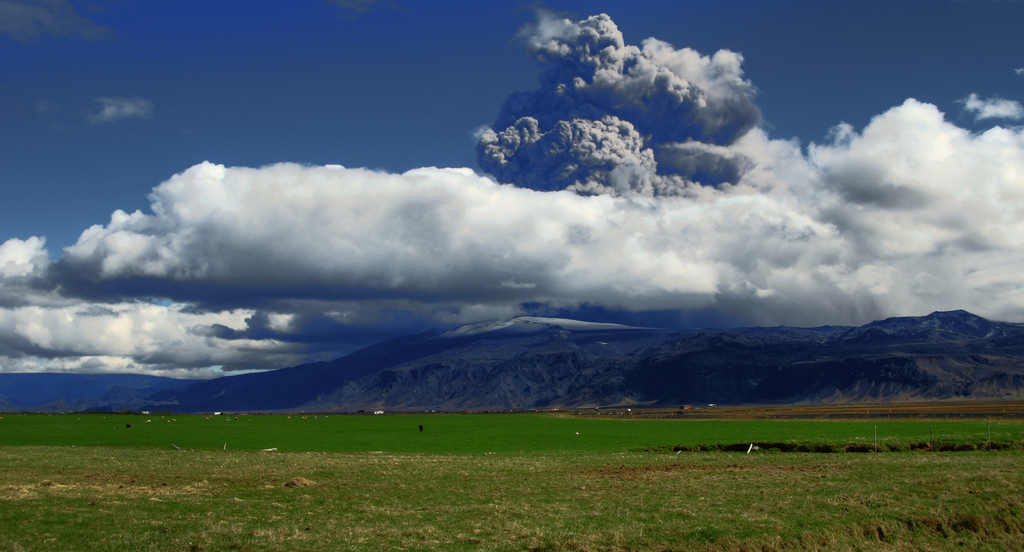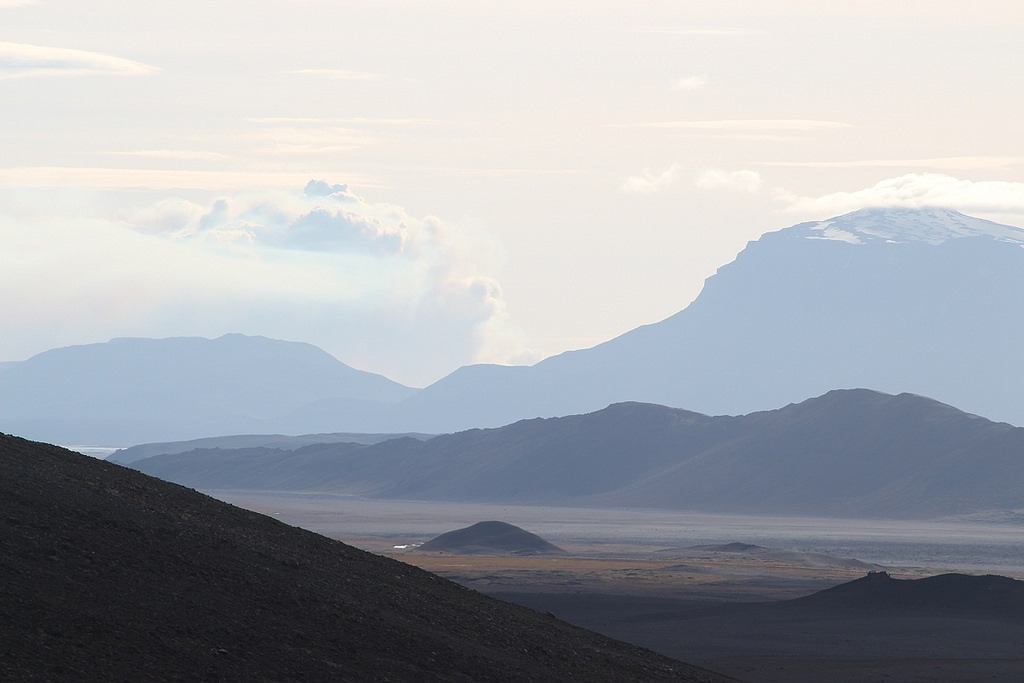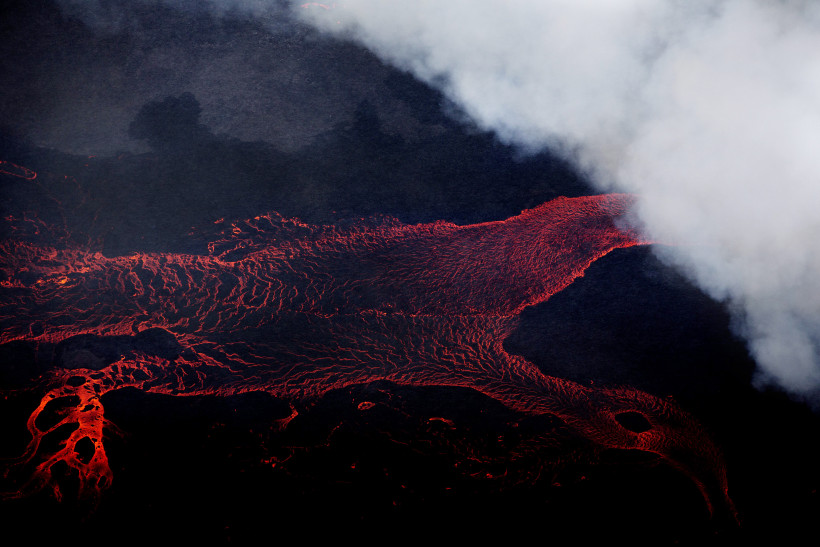Prepare for ash. Posted by hulda on Jan 7, 2016 in Uncategorized
Don’t panic now but Iceland is loading up a new volcanic eruption at Bárðarbunga, the same site where the most recent volcanic eruption also had its start. This time, if the eruption site is the same as the earthquake site it would be sub-glacial, so there’d be plenty of ash. What kind of ash remains to be seen though. When Grímsfjall erupted in 2011 the ash type was different from that of Eyjafjallajökull’s in 2010, the former had heavy type of ash but the latter had the light kind. Heavy ash rains down fast without much disturbance to air traffic, but light ash floats for a long time and gets carried by the wind all the way to Europe just like happened in 2010. There’s no way of telling which type a volcano has, but since Bárðarbunga is near Grímsvötn we could guess that if all goes well it would have little effect on the rest of the world.
For Icelanders however an erupting volcano always means lots of things you simply cannot ignore. Taping the windows shut so the ash doesn’t get indoors to name one example, or washing the car and the house repeatedly throughout the ash fall, staying indoors as much as one can, asthmatic people keeping an eye on air quality daily, for the farmers the most pressing issue would be getting all livestock indoors from the mountain pastures asap (the ash is poisonous to eat) and of course there’s always possible trouble caused by roads being closed in the area. While the rest of the world likes to hold its breath waiting for the next eruption, Icelanders tend to find them at best interesting and at worst massively, massively annoying.
Wait, what exactly is going on?
At the end of November the volcano began to show signs of magma flowing into the magma chamber: there have been strong-ish earthquakes in the area and the volcano is bulging upwards. No immediate signs of eruption such as glacier floods or the ice layer above falling lower, creating huge dents, have yet been seen though. As it is there’s no telling when the volcano is going to go, the only thing we can say with certainty is that it’s giving us every possible sign that it’s definitely planning to do so.
There are a few possible outcomes, as always. A lot depends on where, exactly, the eruption begins: under ice is always worse than on bare land, not only because water mixing with magma causes the ash clouds but also because sub-glacial eruptions come with the danger of glacier floods. The current location of the earthquake activity won’t necessarily mean the eruption happens at the same place either, like happened the last time. Then, too, the shaking started at Bárðarbunga caldera but moved northwards and eventually out of the glacier area, erupting in Holuhraun.
Another factor is the time it takes before the eruption happens. If the volcano decides to go this year the eruption will in all likelihood be a small one, but the longer it sits, brews and gathers magma the bigger the eruption will be. The current theory is that it’ll take the volcano some time to work up enough pressure and that within the next ten years – or two, according to Ármann Höskuldsson – we’ll see something big and long-lasting. Don’t start canceling your flight tickets just yet though, as always, volcanoes are unpredictable in every possible way and no one can currently tell what exactly is going to happen, when, where and what effect if any it will have on the rest of the world. Besides it’s not like this is the only volcano that’s under watch at the moment, Katla is, after all, long overdue her usual schedule…
Volcano vocabulary
Eldfjall (= volcano, lit. transl. “fire mountain”)
Eldgos (= volcanic eruption, lit. transl. “fire eruption”)
Gígur (= crater)
Hraun (= lava)
Bergkvika/kvika (= magma)
Kvikuhólf (= magma chamber)
Brennisteinn (= sulfur, lit. transl. “burn rock”)
Jarðskjálfti (= earth quake)
Jökullhlaup (= glacier flood)
Naturally in times like this it’s important to select a suitable background theme! Here are two very different volcanic pieces of music for you, one inspired by Helka and the other one by Eyjafjallajökull.
Hekla Op.52 here by Jón Leifs is reputedly the loudest piece of classical music in the world if played like the composer intended, cannons included.
Eldgos here is about Eyjafjallajökull and was in the Icelandic Eurovision semifinals in 2011. 😀

Build vocabulary, practice pronunciation, and more with Transparent Language Online. Available anytime, anywhere, on any device.
About the Author: hulda
Hi, I'm Hulda, originally Finnish but now living in the suburbs of Reykjavík. I'm here to help you in any way I can if you're considering learning Icelandic. Nice to meet you!







